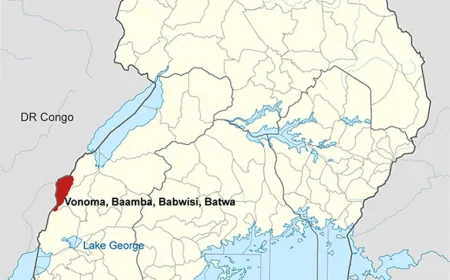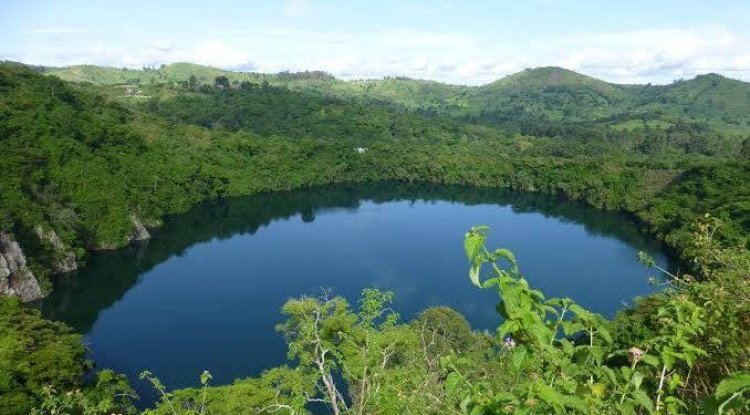Uganda Wildlife Authority New Conservation Fees : 2022-2024
In March 2022, the Uganda Wildlife Authority issued a new Conservation Fee that will come into effect on July 1, 2022. The good news is that price increases are rare. The most notable change in the Uganda Wildlife Authority's new price list is the increase in admission to Murchison Falls National Park, Uganda's most popular safari destination

The entrance fee to Murchison Falls National Park is always set by the Uganda Wildlife Authority and is reviewed every two years. In order to shoot at any of these 10 national film parks, you need to have a filming contract with the Uganda Wildlife Authority, including the fees mentioned above. For filming in any of Uganda's national parks, you as a crew will need to enter into a working agreement with UWA and sign a Memorandum of Understanding.
The Uganda Wildlife Authority intends to charge 40% of the entrance fee for regular wildlife photography in any of Uganda's official national parks. The Uganda Wildlife Authority (UWA) aims to raise around 30 billion shillings through revised national parks and recently announced hunting ground entry fees. On 14 March 2022, the semi-autonomous body in charge of all the country's national parks posted on their social media accounts: "Uganda's new Conservation Fee is now available. Visitor fees are reviewed from time to time to allow the Uganda Wildlife Authority to receive reasonable funds. to support conservation projects, marketing, and even help local communities living near gorilla parks.

Murchison Falls National Park Conservation Fees are paid in cash at the park entrance before entering Murchison Falls National Park, but the Uganda Wildlife Service has introduced a cashless payment method where guests can use a credit card for a commission. Foreign non-residents visiting Murchison Falls National Park pay $40 as entrance fee to Murchison Falls National Park, foreign residents pay $30 per person, and East African citizens pay 20,000 UGX. Admission to Murchison Falls National Park will change from July 1, 2022 to $45 for non-resident aliens, $35 for foreign residents, and 25,000 shillings for East African citizens. With these latest filming rates, anyone interested in filming mountain gorillas in Bwindi National Park or Mgahinga National Park from July 1, 2020 will need to pay a gorilla permit fee of 40% per person per day. Gorilla License.
The above new filming rates mean that the Uganda Wildlife Authority will waive the old filming rates of $4,050 per group per day effective July 1, 2020 in addition to one gorilla per day. Despite the increase, Uganda's gorilla permit is still lower than Rwanda's, where the fee is $1,500 per person. The low/affordable permit price of the Ugandan gorilla has dramatically increased visitor numbers and is expected to continue to rise. For the past 2 years, the gorilla walking permit has been frozen at $600 per person for foreign non-residents, who constitute the largest gorilla walking clientele in Uganda.
Activity rates for all major primates have remained the same as the gorilla trek fee is still $700 for non-resident aliens, $600 for foreign residents and 250,000 shillings for East Africans. More than 90% of the fees remained the same, but this has affected the prices of permits for housing gorillas and chimpanzees. After seeing so many dissatisfied comments, the Uganda Wildlife Authority released the following day March 15, 2022 to rejuvenate disgruntled followers to remind them that the permit rates for keeping gorillas and chimpanzees remained unchanged. Therefore, this remark forced them to revise the rates so that visitors to Murchison Falls National Park do not put as much pressure on the fragile natural environment for sustainable development.
The charging of the fee therefore means that the standard rates previously charged for filming in Uganda's national parks will cease to apply as of June 31, 2020. New rate structure that will be in place for the next two years, tracking and entry tickets for serviced vehicles. Under these changes, shooting expenses will be charged at 40% of the cost of the event, trekking on the managed trails of the Rwenzori Wildlife Authority on the managed trails of the Uganda Wildlife Authority will cost $50 for both foreigners and non-residents, and hopefully this will lower the tariffs for hiking and reduce the monopoly. Another tour operator, who also chose not to be named, said: “The Uganda Wildlife Authority has increased park entrance fees by almost $20, but has distributed them to different locations to give the impression that the increase was only $5.
USD 150 for all foreign tour operator vehicles and 4x4 safari vehicles and UGX 30,000 for tour operator vehicles registered in Uganda. USD 50 for 15-20 seat aircraft registered abroad and 100,000 UGx for aircraft registered in Uganda.
LANDING COST Gliders, ultralights 10 10 20 000 Up to 3 seats 20 20 40 000 4-6 seats 30 30 60 000 7-14 seats 40 40 80 000 15-20 seats 50 50 100 000 21 seats and more 60 10 00 Helicopters2 ( for landing)10 Helicopters 125 250,000 Parking fee per day - 10,000 AU Landing fees do not include entry fees that passengers must pay. USD 40 for foreign registered aircraft carrying 4 to 6 passengers and UGx 60,000 for aircraft registered in Uganda. $150 for foreign-owned buses and trucks and 150,000 UGX shillings for vehicles registered in Uganda.
The above rate applies to those who wish to film gorillas for one hour using the regular gorilla filming permit which costs $700 per person for one hour. For a complete understanding of primates in Uganda, we recommend that you include a golden monkey trip on your Uganda primate safari. Chimpanzee trekking is the second most popular primate activity, taking place in areas of Kibale National Park, Kanyo Pabidi (Budongo Forest), Tooro Semuliki Nature Reserve, Kyambura Gorge and Kalinzu Forest. The Kibale Forest remains the most prominent chimpanzee spotting site in Uganda and Africa.
For full details on activities not listed in the summary (game drives, nature walks, birdwatching and more) download Uganda Wildlife Authority’s full conservation tariff for July 2022 to June 2024
Files
What's Your Reaction?
 Like
0
Like
0
 Dislike
0
Dislike
0
 Love
0
Love
0
 Funny
0
Funny
0
 Angry
0
Angry
0
 Sad
0
Sad
0
 Wow
0
Wow
0











































































